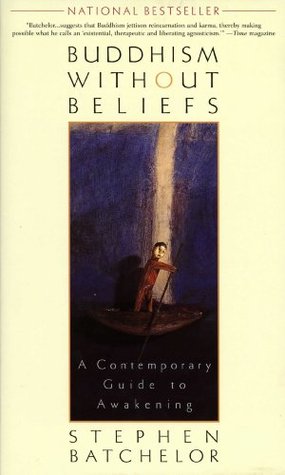More on this book
Community
Kindle Notes & Highlights
four ennobling truths: those of anguish, its origins, its cessation, and the path leading to its cessation.
Anguish, he says, is to be understood, its origins to be let go of, its cessation to be realized, and the path to be cultivated.
THE BUDDHA AWOKE from the sleep of existential confusion.
As soon as understanding is isolated from letting go, it degrades into mere intellectuality. As soon as letting go is isolated from understanding, it declines into spiritual posturing.
The power of organized religion to provide sovereign states with a bulwark of moral legitimacy while simultaneously assuaging the desperate piety of the disempowered
For T. H. Huxley, who coined the term in 1869, agnosticism was as demanding as any moral, philosophical, or religious creed. Rather than a creed, though, he saw it as a method realized through “the rigorous application of a single principle.” He expressed this principle positively as: “Follow your reason as far as it will take you,” and negatively as: “Do not pretend that conclusions are certain which are not demonstrated or demonstrable.”
We discover that we have been thrown, apparently without choice, into a world not of our making.
Without stamping it out or denying it, craving may be renounced the way a child renounces sandcastles: not by repressing the desire to make them but by turning aside from an endeavor that no longer holds any interest.
The pivotal moment of human consciousness: it becomes a question for itself.
RELIGIONS ARE UNITED not by belief in God but by belief in life after death.
IT IS OFTEN claimed that you cannot be a Buddhist if you do not accept the doctrine of rebirth. From a traditional point of view, it is indeed problematic to suspend belief in the idea of rebirth, since many basic notions then have to be rethought.
Dharma practice can never be in contradiction with science: not because it provides some mystical validation of scientific findings but because it simply is not concerned with either validating or invalidating them. Its concern lies entirely with the nature of existential experience.
Agnosticism is no excuse for indecision. If anything, it is a catalyst for action; for in shifting concern away from a future life and back to the present, it demands an ethics of empathy rather than a metaphysics of fear and hope.
Dharma practice cannot be abstracted from the way we interact with the world.
To stop and pay attention to what is happening in the moment is one way of snapping out of such fixations. It is also a reasonable definition of meditation.
Focused awareness is difficult not because we are inept at some spiritual technology but because it threatens our sense of who we are. The apparently unthreatening act of settling the mind on the breath and observing what is occurring in the body and mind exposes a contradiction between the sort of person we wish to be and the kind of person we are. Restlessness and lethargy are ways of evading the discomfort of this contradiction.
To meditate is not to empty the mind and gape at things in a trancelike stupor. Nothing significant will ever be revealed by just staring blankly at an object long and hard enough.
I may be able to ease the spasm of self-centeredness by realizing that I am not a fixed essence but an interactive cluster of processes.
If a person blind from birth were suddenly able to see, he would not open his eyes and just behold the world of the sighted. He would behold a bewildering array of colors and shapes, which he then would learn to make sense of. The world is so saturated with the meanings given to it that those meanings seem to reside in the things themselves.
Instead of a fixed nugget of “me,” you find yourself experiencing a medley of sensations, moods, perceptions, and intentions, working together like the crew of a boat, steered by the skipper of attention.
Lines are drawn in the mind. There are no lines in nature.
Whatever emerges in this way is devoid of an intrinsic identity: in other words, things are empty.
Are you able, even for a moment, to witness these people in all their autonomy, mystery, majesty, tragedy? Can you see them as ends in their own right rather than means to your ends?
Can you let go of the craving to embrace the friend and banish the enemy?
INSIGHT INTO EMPTINESS and compassion for the world are two sides of the same coin.
Just as we need the courage to respond to the anguish of others, so we need the discernment to know our limitations and the ability to say “no.”
As a focus for mindfulness, the breath is the one bodily function that can be both autonomous and volitional
the sane detachment of ironic self-regard.
Perplexity keeps awareness on its toes.
[A] talent for speaking differently, rather than for arguing well, is the chief instrument of cultural change. —Richard Rorty
if we cannot imagine forms of life that respond effectively to the situation at hand, we will be limited in what we can do. Instead of finding a voice that speaks to the unique contingencies of our own situation, we repeat the clichés and dogmas of other epochs. Instead of creatively participating in a contemporary culture of awakening, we confine ourself to preserving those cultures of a vanishing past.
controls may provide a necessary safeguard against charlatanism and self-deception,


